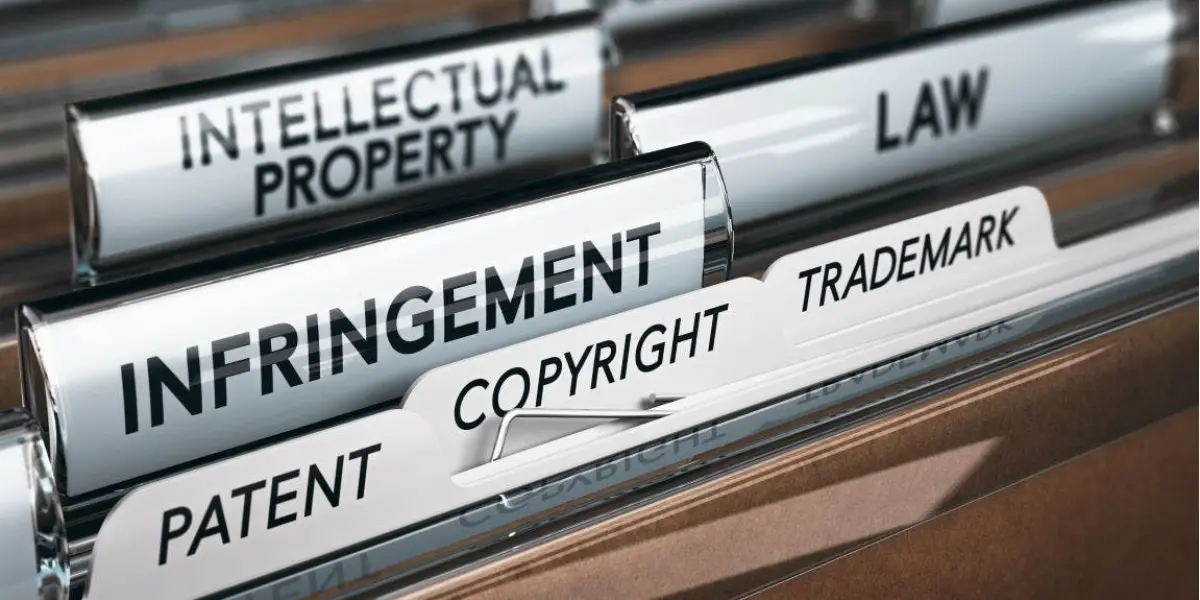Intellectual Property rights: the bedrock of software protection
Intellectual property refers to creations of the mind, such as inventions, literary and artistic works, designs, and symbols. When it comes to software, intellectual property rights can safeguard your unique concepts, designs, or processes. These rights typically take the form of either copyright or patent protection.
The decision to protect software by copyright or by patent is more than just a legal nuance – it’s a strategic decision with far-reaching implications for business growth, innovation, enabling scalability, and fostering market differentiation.
For startups and SMEs, a well-managed IP portfolio can significantly enhance their attractiveness to investors, who often view strong IP protection as a sign of the company’s value and potential for growth. In this context, robust software protection serves not only as a defensive measure against potential infringers, but also as a key asset that enhances business value and investor confidence.
Software protection by copyright
At its most fundamental level, copyright protects the expression of an idea. When applied to software, it typically covers the code and certain elements of the user interface. This feature lends itself particularly well to protecting unique functionalities or designs within the software.
Copyright protection automatically arises when the software is created, needing no formal application process. However, registering your copyright with a trusted third party can offer certain advantages in case of legal disputes. In general, copyright protection extends for a lengthy period, usually for the life of the author plus 70 years in many jurisdictions, including the United States.
The main advantage of copyright protection is its comprehensiveness; it safeguards the software against unauthorized copying, distribution, and adaptation. However, copyright does have limitations. It doesn’t cover the underlying concepts, algorithms, or system architectures. In essence, while copyright prevents direct copying of code, it doesn’t stop others from creating functionally identical software using different code.
The role of patents in software protection
In contrast, a patent protects the underlying idea or function of a piece of software, rather than its specific expression. Patents protect processes, methods, systems, and apparatuses that are novel, non-obvious, and useful. In software, these could be unique algorithms, data processing techniques, or system integrations.
Obtaining a software patent is more challenging and time-consuming than securing a copyright. The process requires a thorough application demonstrating the software’s novelty and utility, reviewed by patent examiners. Once granted, a patent generally lasts for up to 20 years from the date of filing.
Software patents in the EU are a more contested terrain. The European Patent Convention does not consider software as such to be patentable. However, the European Patent Office grants patents for software when it’s part of a technical solution to a technical problem. This implies that the software must contribute a non-obvious, inventive step beyond the normal interactions between hardware and software.
By contrast, countries like the US adopt a more liberal approach, granting software patents more readily. Meanwhile, China has seen a surge in software patents applications, underlining the country’s push to secure its place as a global tech powerhouse. These contrasting approaches underscore the dynamic, globally diverse landscape of software IP protection.
The strength of patent protection lies in its exclusivity. A patent owner has exclusive rights to prevent others from using, selling, or making the patented invention, even if the third party developed it independently. However, the specifics of the software must be disclosed publicly, which could be a disadvantage if secrecy is a business strategy.
Compared to copyright, patents offer broader protection. They shield the underlying ideas, algorithms, and system architectures of software, beyond the mere expression in code. Thus, patents can prevent others from creating functionally identical software, making patents a robust choice for securing groundbreaking innovations.
Choosing between copyright and patent for software protection
Choosing between copyright or patent protection hinges on your goals, resources, and the nature of your software. If your software’s value lies in its unique code or artistic expression, copyright might be the best protection. However, if the software contains a novel and non-obvious method or process, a patent might be the more suitable path.
When it comes to software protection, it’s not necessarily a choice between copyright or patent. Both can coexist and offer complementary protection. Copyright provides immediate and automatic protection, while patents can secure the fundamental, inventive aspects of the software.
The choice depends on several factors, including the nature of the software, its market potential, and the company’s long-term business strategy. Companies should consider these aspects in light of their broader IP portfolio, regulatory landscape, and potential threats to their software.
Understanding the subtleties of software protection and intellectual property law is complex, and making the right choice can have far-reaching implications for your business. It’s advisable to seek professional guidance to ensure you’re making the most informed decisions.
Final thoughts on Intellectual Property and software protection
Intellectual property rights are pivotal to maintaining a competitive edge, and nowhere is this truer than in the complex world of software development. Whether you opt for copyright or patent protection, or a combination of both, depends on your software, business strategy, and resources.
No matter what, make sure you’re fully informed and prepared. Your software’s source code and algorithms are the lifeblood of your tech firm, and understanding the best methods for software protection is the key to safeguarding your success.
Disclaimer
The opinions, presentations, figures and estimates set forth on the website, including in this blog, are for informational purposes only and should not be construed as legal advice. For legal advice you should contact a legal professional in your jurisdiction.
The use of any content on this website, including in this blog, for any commercial purposes, including resale, is prohibited, unless permission is first obtained from Vaultinum. Request for permission should state the purpose and the extent of the reproduction. For non-commercial purposes, all material in this publication may be freely quoted or reprinted, but acknowledgement is required, together with a link to this website.

